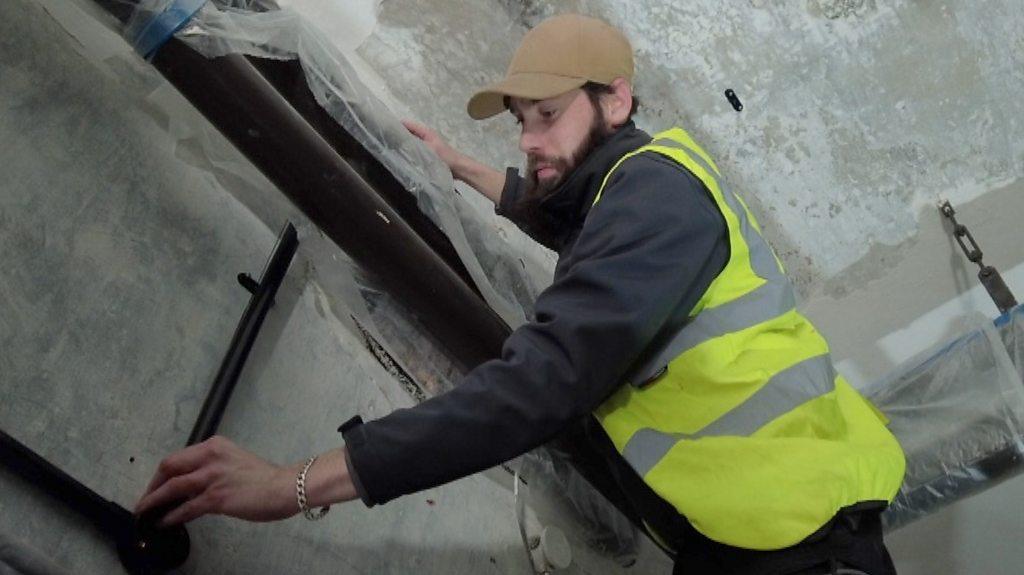Restored war bunker tells history of Jersey Occupation
- Published
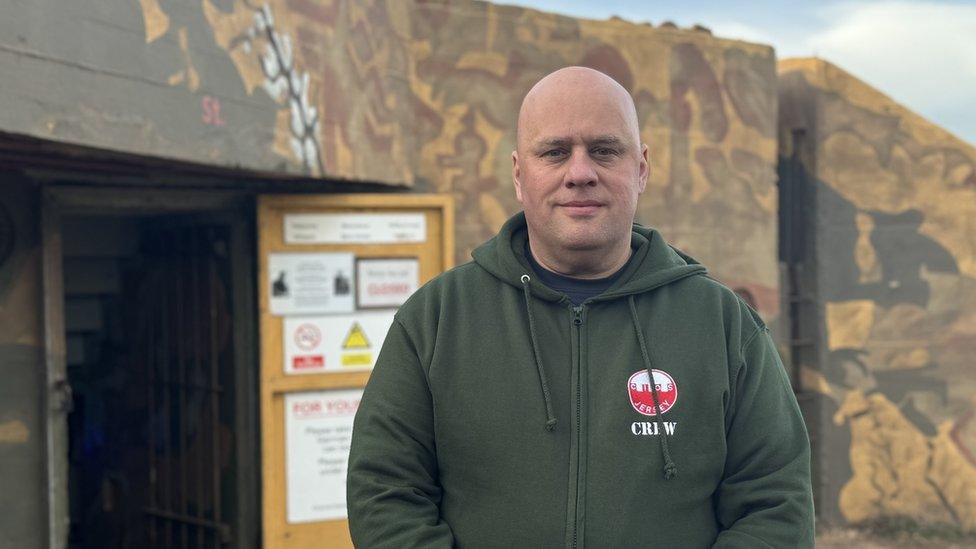
CIOS Vice President Malcolm Amy said volunteers had been restoring the bunker for more than 30 years
A restored wartime bunker is reopening to the public to tell the history of Jersey's Occupation.
Volunteers from the Channel Islands Occupation Society (CIOS) have added further detail to Strongpoint Corbière.
The bunker was built during the Occupation of the Channel Islands in 1942, forming part of a network of sites defending Jersey's South West.
CIOS Vice President Malcolm Amy said volunteers had been restoring the bunker for more than 30 years.
He said: "We use evidence within the bunker, you can see where a lot of things were bolted to the wall.
"We also use first hand accounts both from soldiers who were stationed here during the occupation and also visitors who have come to us in the 90s, or who visited shortly after Liberation."
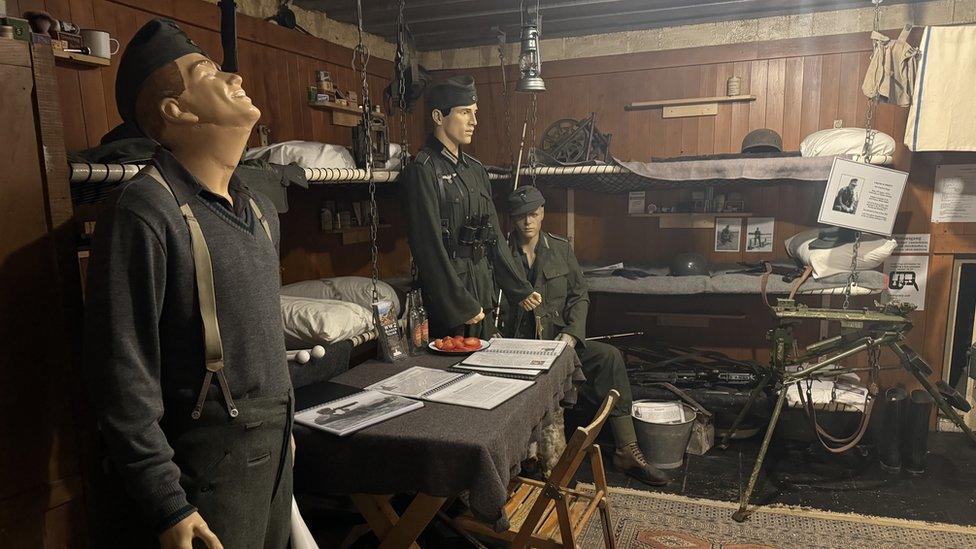
Each room within the bunker has been restored to how it would have looked when it was in operation
Jersey was occupied by Germany for five years during World War Two, and Strongpoint Corbière formed part of Hitler's Atlantic Wall.
Mr Amy said the bunker had been "refreshed", and included a first hand account from Engelbert Hoppe - a regional commander for the bunker during the last year of the war in 1945.
'Failed escape'
He said: "He randomly turned up during one of our openings in 2006.
"He gave us a lot of information about the crew he had in here, so when you go through you can see there's mannequins portraying the actual crews."
Mr Amy said audio told visitors about their interactions with civilians during the war, and also about a failed escape attempt from islanders which it intercepted.
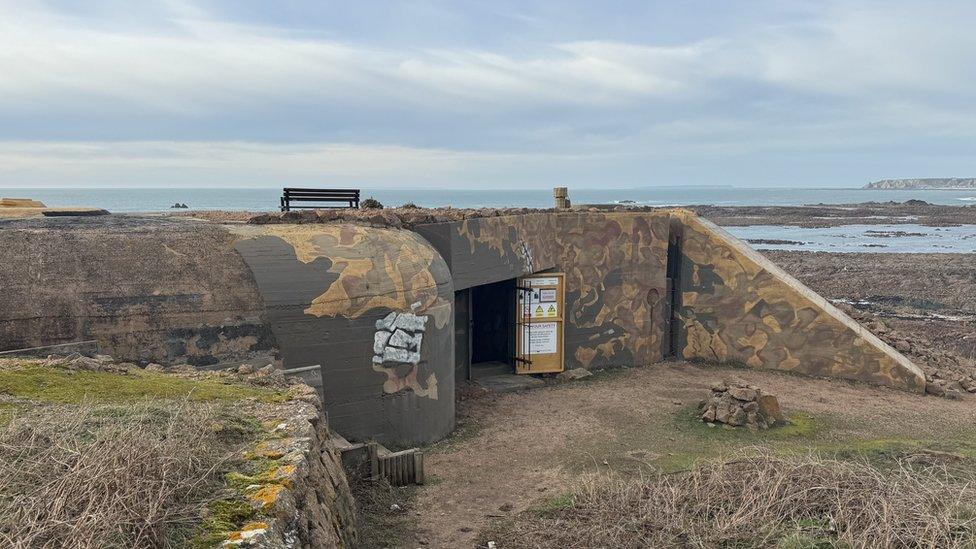
Below, the bunker is linked by a long underground corridor to a neighbouring bunker
From the outside, the bunker sits on top of rock formations next to Corbière Lighthouse, but below - two floors with six rooms extend to the depth of 40ft (12m).
Mr Amy said: "This bunker is also unique as it's linked by about 50m (164ft) long underground corridor to the neighbouring bunker up the hill as well.
"Each room within the bunker is restored to how it would have looked when it was in operation."
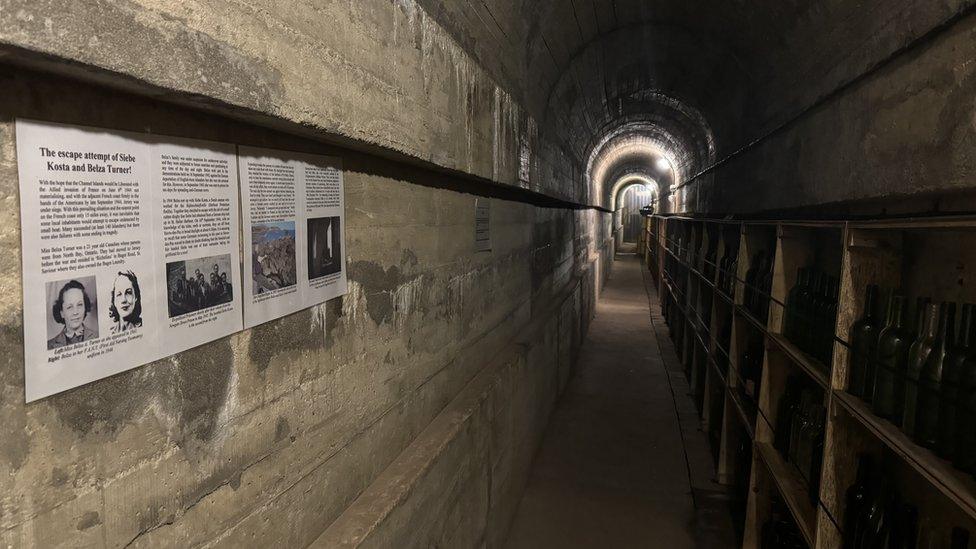
The tunnel was also used to store bottles of water, and is etched with pencil markings from the time
Mr Amy said the restoration did not glorify the island's occupation, but instead portrayed its reality.
He said: "It specifically shows what it was like - it was built by the German's basically to keep the allies out, including the British.
"Some visitors today are surprised that the stuff's in German, so you need to point out to them that the islands were occupied by the German forces which takes some people by surprise."
The area of Corbière hosted an array of weaponry and six fortifications - and a multitude of defence guns.
CIOS said it provided a "working atmosphere", allowing people to touch and interact with some of the exhibits.
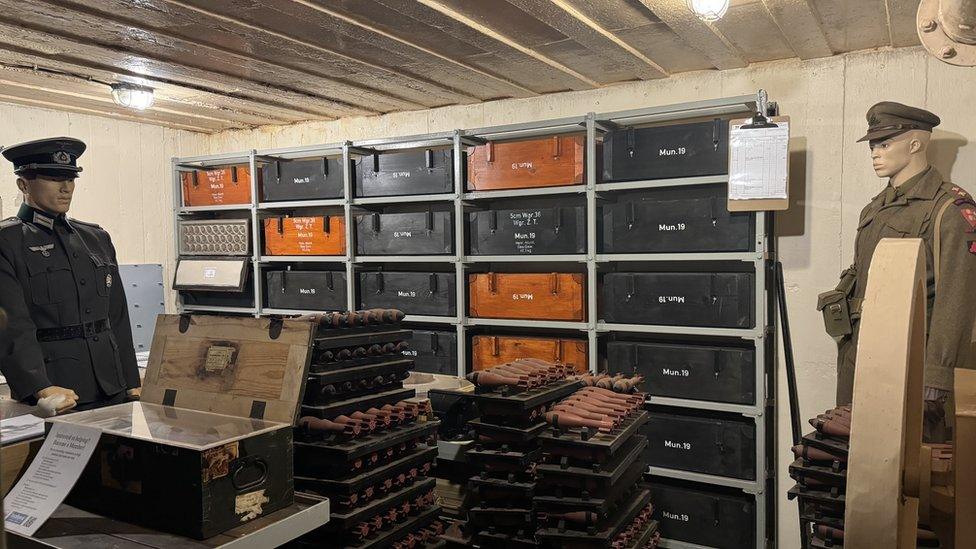
An ammunition room has been restored to look as realistic as possible to the time
Mr Amy said a lot of visitors were usually "surprised" by the tunnel, and also the amount of ammunition it stored.
He said: "They expect a small gun, maybe a few boxes of ammo, but they come and they see it's a fully integrated structure.
"You've got a room with beds, heating and all that, there's a room for ventilation to prevent gas getting in, and then the ammunition room and the weapon itself and the tunnel which is all full of bottles of waters.
"It is an important part of the island's history - quite unique within all of occupied Europe as well during the Second World War for how the islands were occupied."

Follow BBC Jersey on X (formerly Twitter), external and Facebook, external. Send your story ideas to channel.islands@bbc.co.uk, external.
- Published11 December 2023
- Published30 October 2023

- Published9 May 2023

- Published28 February 2023
